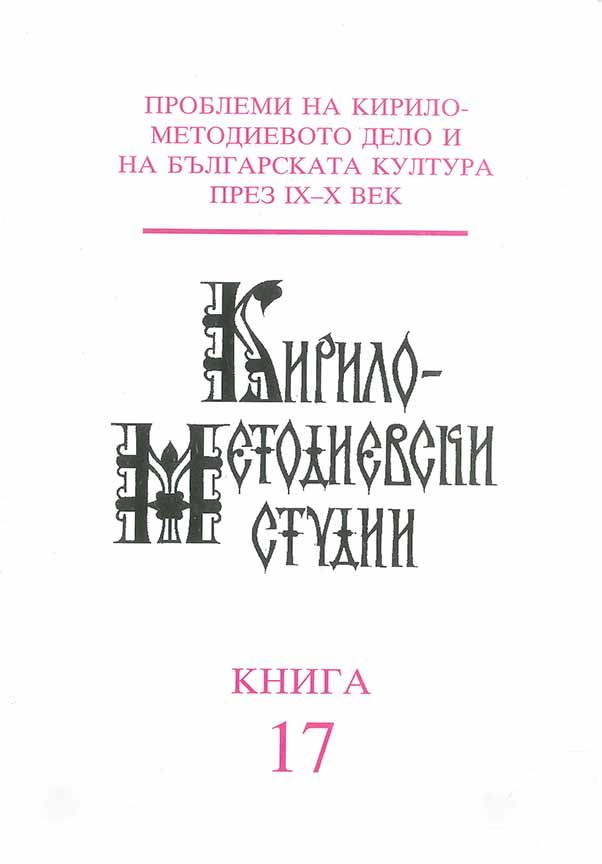Съотношението устност-писменост в християнското богослужебно пеене през старобългарския период (IХ-Х в.): хипотези
The Relationship Between Oral and Written Transmission in Christian Liturgical Singing in the Old Bulgarian Period (9th-10th c.)
Author(s): Elena TonchevaSubject(s): Language studies, Language and Literature Studies, Fine Arts / Performing Arts, Music
Published by: Кирило-Методиевски научен център при Българска академия на науките
Summary/Abstract: The article poses the issue of the adaptation techniques in collating Byzantine singing models with Slavic texts. It provides a critical survey of the methods of comparison that are applied. The author introduces a newly-found neumed record (in the manuscript Athens No 928, f. 154a, from the second half of the 15th century, Late Byzantine notation) of the sticheron for Theophany after the automelon "Oi aggelikai...", which is a late Slavic translation of a hymn by Theodore Graptus. An analysis is made of the melody consisting of two repeated psalmodic singing models, which make up the six-line sticheron stanza on the basis of the scheme A A B B A AB. The results of the analysis give enough ground to assume that the singing of this sticheron follows an early Byzantine psalmodic chant known in Byzantine Music studies as "echos singing", prior to the emergence of the idiomela in the 8th century. The author defends the hypothesis that in the Old Bulgarian period, when the same automelon was an active element of Old Bulgarian hymography, it was this type of earlier singing that was adopted. This made possible the reproduction of Slavic singing in the oral transmission up to the 15th century.
Journal: Кирило-Методиевски студии
- Issue Year: 2007
- Issue No: 17
- Page Range: 759-772
- Page Count: 14
- Language: Bulgarian
- Content File-PDF

